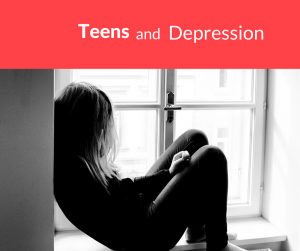Let's Talk About Complex Trauma
/By Concentric Counselor Jordan Perlman, LPC, NCC
I imagine many people have heard of Post-Traumatic Stress Disorder (PTSD) but not nearly as many are familiar with Complex Post-Traumatic Stress Disorder (C-PTSD) which is lesser-known and unfortunately, not yet recognized in the Diagnostic and Statistical Manual of Mental Disorders Fifth Edition (DSM-V). And while an individual with a PTSD diagnosis, which is often the result of an isolated incident, a person who experienced complex or repeated traumas requires different considerations.
But first, it’s important to understand the differences between each:
PTSD
According to the DSM-V, PTSD is diagnosed when an individual meets the following criteria that create distress or functional impairment last more than one month, which is not a result of medication, substance use, or other illness. The individual was exposed to one of the following:
Death or threatened death
Actual or threatened serious injury
Actual or threatened sexual violence
Witnessing trauma
Learning that a relative or close friend was exposed to trauma
Indirect exposure to aversive details of the trauma (usually in the course of professional duties), the individual must have at least one intrusive symptom that causes the persistent re-experience of the trauma in the following ways:
Nightmares
Flashbacks
Emotional distress after exposure to traumatic reminders
Physical reactivity after exposure to traumatic reminders
The individual must also experience avoidance of trauma-related stimuli after trauma either by trauma-related thoughts or feelings, or trauma-related external reminders.
Two negative alterations in cognitions and mood must be present where the negative thoughts or feelings began or worsened after trauma in the following ways:
Inability to recall key features of the trauma
Overly negative thoughts and assumptions about oneself or the world
Exaggerated blame of self or others for causing trauma
Negative affect
Decreased interest in activities
Feeling isolated
Difficulty experiencing positive affect
Lastly, there must be alterations in trauma-related arousal and reactivity that began or worsened after trauma in the following ways:
Irritability or aggression
Risky or destructive behavior
Hypervigilance
Heightened startle reaction
Difficulty concentrating
Difficulty sleeping
C-PTSD
Trauma typically associated with C-PTSD tends to be long-term, where the individual is generally held in a state of captivity, physically or emotionally. In these situations, the victim under the control of the perpetrator has little or no chance to get away or escape from the danger. Some examples might include:
Long-term domestic violence
Long-term child physical and/or sexual abuse
Neglect
Organized exploitation rings
Concentration/Prisoner-of-War Camps
Prostitution brothels
Recruitment into armed conflict as a child
Sex trafficking or slave trade
Experiencing torture
Exposure to genocide campaigns
Other forms of organized violence
Some might be wondering, why is this difference important then? This is because of exposure to long-term or prolonged or repeated trauma results in a broad range of symptoms that go beyond the diagnostic criteria of PTSD, a.k.a “simple” PTSD. As such, the basic symptoms of C-PTSD are:
Somatization (physical problems, associated pain, and functional limitations)
Dissociation (a division of the personality into one component that attempts to function in the everyday world and another that regresses and is fixed in the trauma, spacing out, daydreaming, or feeling strong sensations of being disconnected from one self or the world)
Affect Dysregulation (difficulty with emotions, such as experiencing and/or expressing them, alteration in impulse control, attention and consciousness
Self-Perception (experience of their own perspective tends to be drastically different from how others perceive them)
Interpersonal Relationships (tend to be a struggle, difficulty with engaging with others, feeling distrustful of others)
Perception of Perpetrators (can be skewed, or longing to be loved by their abuser)
Systems of Meaning (doubt there is any goodness in the world, outlook on life can be dark)
Further, a 2018 study by Karatzias et al. found the most important factor in the diagnosis of C-PTSD was negative cognitions about the self, characterized by a “generalized negative view about the self and one’s trauma symptoms; attachment anxiety which is defined as involving a fear of interpersonal rejection or abandonment and/or distress if one’s partner is unresponsive or unavailable; and expressive suppression, conveyed by efforts to hide, inhibit, or reduce emotional expression.”
For those who may wonder why people affected by a long-term trauma “can’t just get over it,” the answer lies in the fact that even after a person is removed from the event, their brain may be permanently affected by that intense and prolonged trauma. And since a person’s nervous system is shaped by his or her experiences, stress and trauma over time, can lead to changes in the parts of the brain that control and manage feelings and the long-term effects are found on a physical and emotional level.
Symptoms may manifest as:
Eating disorders
Substance abuse
Alcoholism
Promiscuity
Chronic pain
Cardiovascular and gastrointestinal problems
Migraines
Rage displayed through violence, destruction of property, or theft
Depression, denial, fear of abandonment, thoughts of suicide, anger issues
Flashbacks, memory repression, dissociation
Shame, guilt, focusing on wanting revenge
Low self-esteem, panic attacks, self-loathing
Perfectionism, blaming others instead of dealing with the situation, selective memory
Loss of faith in humanity, distrust, isolation, inability to form close personal relationships
Special Considerations for Survivors of C-PTSD from Childhood
Many survivors of C-PTSD also experience Attachment Disorder which is a huge consequence of individuals who suffered complex trauma as children. Attachment Disorder is the result of a person growing up with primary caregivers who were regularly dangerous. Recurring abuse and neglect habituate children living in fear and sympathetic nervous system arousal, which over time creates them an easily triggerable abandonment mélange of overwhelming fear, shame, and depression.
Because a child’s main attachment (to their primary caregiver) helps them learn to control their emotions and thoughts, when a caregiver’s responses are in tune with a child’s needs, the child feels secure. The child then uses this relationship pattern as a practice to build coping skills.
However, children who receive prolonged confusing or inconsistent responses from their primary caregiver are prone to be fussy, have a hard time calming down, may often withdraw from others and may have frequent tantrums. Unlike adults who have more tools to understand what is happening to them, children often do not possess these skills or have the ability to separate themselves from another’s unconscionable actions. Consequently, the resulting psychological and developmental implications become complexly woven and spun into who that child believes themselves to be, thereby creating a messy web of core beliefs that are harder to untangle than the flashbacks, nightmares and other posttraumatic symptoms that may surface later. Further, these disorganized attachments and mixed messages from those who are supposed to provide love, comfort, and safety - all in the periphery of extreme trauma - can create even more unique struggles that PTSD-sufferers alone don't always face.
Treatment Considerations
While the symptoms can be daunting and the future seems bleak for someone who appears to be suffering from C-PTSD regardless of whether an individual has been diagnosed with a trauma-related disorder or not, there is help out there and there are ways to manage and help the individual cope.
Treatment challenges include, Survivors:
Avoiding thinking and talking about trauma-related topics because the feelings associated with the trauma are often overwhelming
Relying on alcohol or other substances as a way to avoid and numb feelings and thoughts related to trauma
Engaging in self-mutilation and other forms of self-harm
Who have been abused repeatedly are sometimes mistaken as having a “weak character” or unjustly blamed for the symptoms they experience as a result of victimization and often have comorbid disorders such as dissociative identity disorder (DID), other specified dissociative disorder (OSDD), borderline personality disorder (BPD), depressive or bipolar disorders, anxiety disorders, obsessive-compulsive disorders, eating disorders, and substance abuse
Since many trauma specialists see Attachment Disorder as one of the key symptoms of C-PTSD, a relational, individual, approach will often be most beneficial for many of these clients. For many survivors, therapy is the first opportunity to have a safe and nurturing relationship. Therefore, the therapist must be especially skilled to create the degree of safety that is needed to build trust or risk adding to the attachment trauma. Working with these clients is essential to the development of trust and relational healing and the four key qualities are empathy, authentic vulnerability, dialogically (when two people move fluidly and interchangeable between speaking and listening) and collaborative relationship repair. This makes therapy a teamwork approach where there is mutual brainstorming and problem-solving in a respectful way implying mutuality. All of these steps will provide the client with a “good enough secure attachment” to serve as a model for other relationships.
However, and as expected, there is no “one size fits all” approach to working with individuals who have survived trauma, but one thing is for certain: recovery from Complex PTSD requires restoration of control and power for the traumatized person. Survivors can become empowered by healing relationships which create safety, allow for remembrance and mourning, and promote reconnection with everyday life.
If you feel as though you have experienced complex trauma, it is important to know what happened to you was not your fault. While it is undeniable trauma changes the way we experience the world, I strongly believe like a phoenix, a person who suffered from trauma can arise from the ashes, stronger than ever before. This “stronger than ever before” is also known as “Post-Traumatic Growth.” Post-Traumatic Growth identifies a shift in personal strength and worldview as a consequence of trauma. Although you can’t change it, you can change what your life looks like going forward. One step you can take towards recovery is calling to schedule an appointment with a therapist who can help guide and support you on your healing journey.








